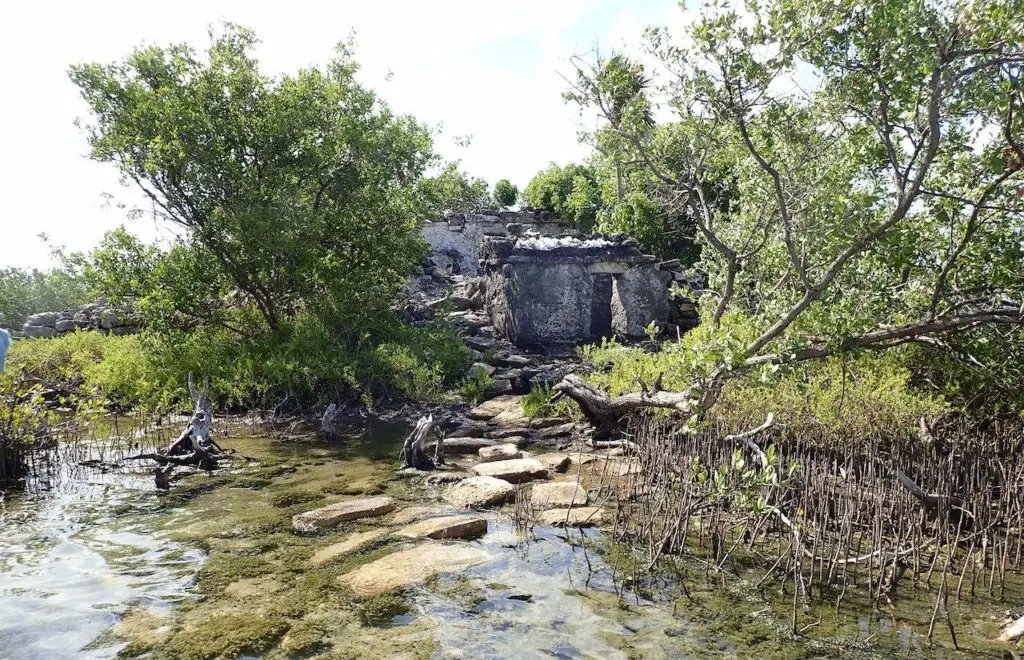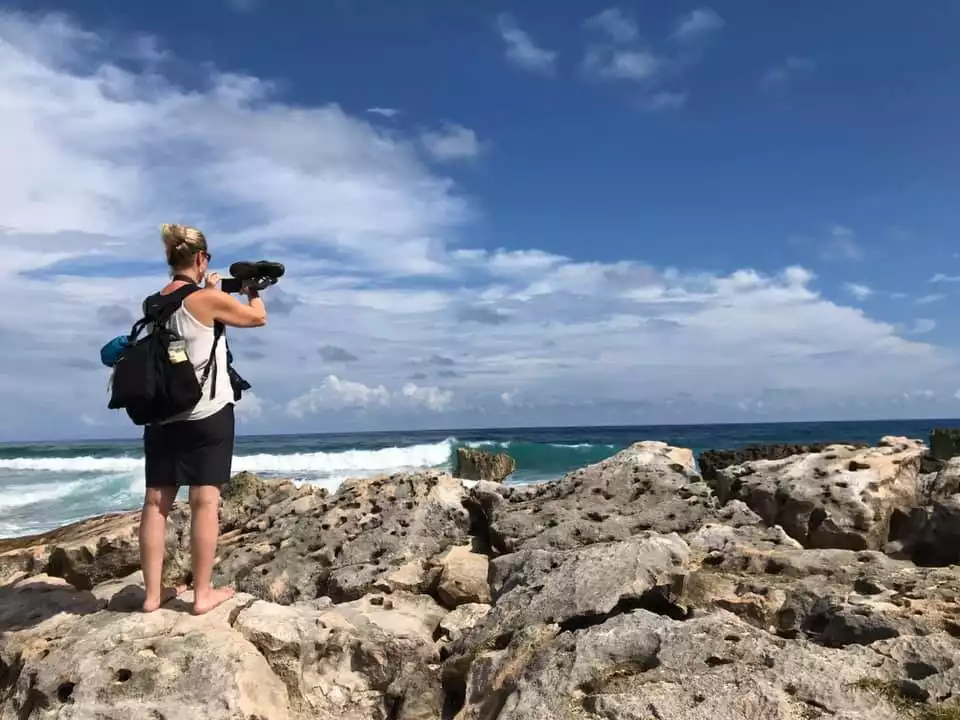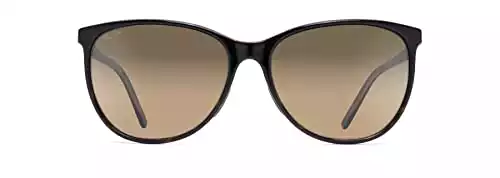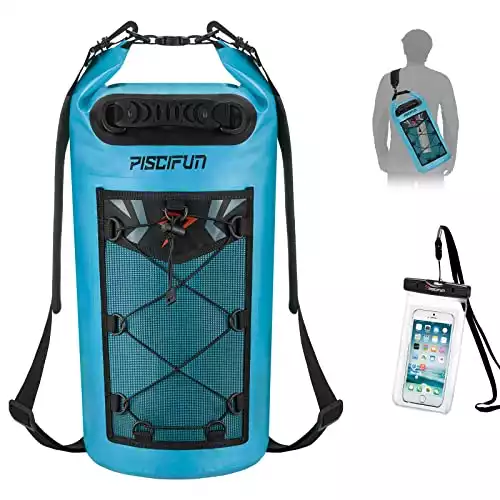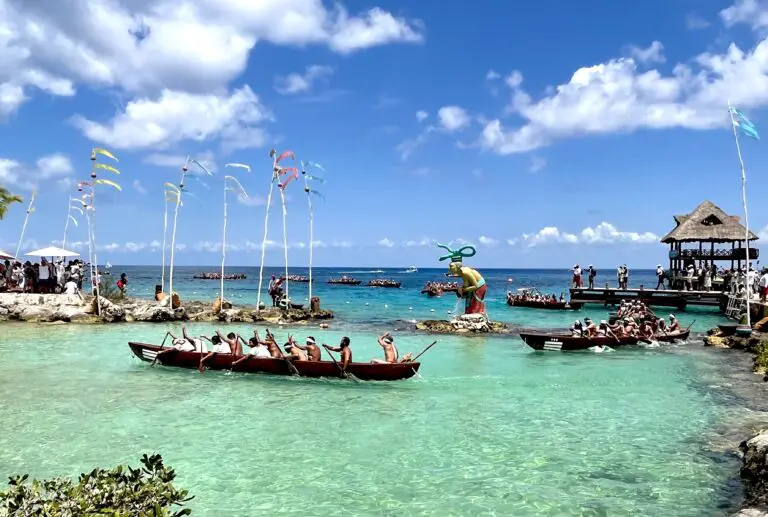The Cozumel Mayan Ruins Sites That Are Worth Visiting
After trekking over to the mainland from Cozumel and spending a long, hot day to finally check out the Chichen Itza archaeological site, I was definitely impressed. I was also exhausted, thirsty, and soaked in sweat. It was worth it, but boy did it make me even more appreciative of the Cozumel ruins and other vestiges of Mayan culture right here on Cozumel island.
Cozumel’s own Mayan ruins are not as famous as Chichen Itza or Coba, but the Cozumel ruins sites include an essential Mayan pilgrimage destination for the goddess of fertility, Ixchel. San Gervasio (originally Tantun) park is the most complex of Cozumel Mayan ruins sites, and several additional Mayan relics can be found around the island, namely vestiges of old Mayan roads, buildings, altars, and arches.
While smaller than some of the pre-Hispanic archaeological sites on Mexico’s mainland, Cozumel Mayan ruins structures are nevertheless quite historically significant and can be found in various locations around the island.
For me, that’s a complete win-win.
Cozumel Mayan ruins and archaeological sites make for more accessible stops along a fuller day’s itinerary, so you can really focus and take in the historical stories they have to tell.
And if you are on a family vacation to Cozumel, taking in some culture and fascinating ancient history can be priceless…but only if you work within your kids’ (and your own!) physical and emotional stamina for such things.
Best Cozumel Mayan Ruins and History Sites to Visit
Unlike my marathon day spent touring Chichen Itza, getting exposed to some of the intriguing pre-Hispanic history in Cozumel does not have to be overwhelming.
There are several places on the island to encounter physical traces of the Mayan peoples in Cozumel and the Yucatan peninsula, and in my opinion, it’s good to take a somewhat tactical approach – at least at first.
Cozumel’s Museum for Mayan Artifacts
My first recommendation is to spend an hour or two at Cozumel’s main museum in town, to point you in the right direction.
The Museum of Cozumel Island (El Museo de la Isla) is a favorite site to see in Cozumel, and the whole place was fully renovated and reopened with new exhibits and updated interpretation in 2020.
The Museum’s various galleries introduce visitors to the island’s natural history, environment, and wildlife, and then dedicate most of their spaces to the human history of the island and surrounding region.

It’s a great place to start and get your bearings, especially if you’re a first-time visitor.
A full museum visit doesn’t take up too much time, yet it fills in many blanks about what Cozumel is known for, why diving in Cozumel is so popular, and how some well-known holidays and traditions are celebrated on the island.
It will also likely give you ideas on what else to do in downtown Cozumel, or where you might want to plan for some family activities during the rest of your stay – including several of the island’s Mayan ruins locations.
The museum gives new visitors to Cozumel a great overview of the island’s footprint, and then covers where – and how and why – some of the Mayan sites are located, and their significance to the Maya culture, and how they are still being studied and interpreted today.
Through a combination of original artifacts and good quality reproduction pieces, the Museum is a great way to get a full overview of Cozumel’s history, and yet do so without reading hours of interpretation – and suffering the museum fatigue that often follows.
It’s also a good ace in the hole on a rainy day in Cozumel, or if you need a break from the sun for a while (crazy sounding, I know…but it happens).
Planning Your Visit (Average museum visit time: 1.5-2 hours)
Cozumel Museum Hours:
Please always check the link to the museum’s official page for current hours
Currently, the Cozumel Museum is open from Tuesday – Sunday from 9am – 5pm.
Admission: $9.00USD, free for children under 3 years old

Is there a Museum Cafe? Yes, and it’s a lovely restaurant – with a great view! – is open on the museum’s 2nd floor
Cozumel Ruins: Top Mayan Site at San Gervasio
Tantun Cuzamil (or ‘flat rock in the land of the swallows’ (birds)) was the original name for what is now known as the San Gervasio archaeological complex of Cozumel ruins.
San Gervasio is the most important historical concentration of Cozumel Mayan ruins on the island and consists of a decent-sized campus with different zone and building clusters, clearly laid out on maps provided.

You can tour the map on your own, finding the various concentrations of buildings and utilizing the well-placed interpretation signage (in English, Spanish and Mayan) provided by the parks department, or you may opt to hire the services of one of many fun and knowledgeable tour guides at the entrance of the park site.
Between the museum’s updated interpretation and the content here, there are small discrepancies about precisely where Mayan pilgrims would come to pay homage to the goddess Ixchel.
We know from previous study of the annual Sacred Mayan Crossing that this critical pilgrimage and offerings were to Cozumel itself, and the Tantun/San Gervasio site has long been considered the primary location of Ixchel’s shrine.
All in, San Gervasio is the largest extant grouping of Mayan ruins in Cozumel and has earned its reputation as the most meaningful.
Planning Your Visit (Average San Gervasio visit time: 2 hours)
San Gervasio Park Site Hours:
Please double-check the official San Gervasio link here to confirm current hours.
Currently, San Gervasio park is open from Monday – Sunday, 8am – 4pm
Admission: $12.50USD adults and kids, plus a $4 parks fee; Children under 3 are free
What to Bring:
Environmentally-friendly bug repellent, sun hat, decent walking shoes (for grass and dirt paths)
Amenities? The park has plentiful parking (though I’d recommend taking a Cozumel taxi there), good public restrooms, and a few small stores and souvenir stands at the main entrance to the site.
To Make Your Life Easier:
Consider booking a private taxi for a day, and take guided tour once you arrive to San Gervasio. You’ll meet up at a convenient spot in downtown San Miguel, and have a comfortable private vehicle and a fun guide with you the whole time – and you can go eat, swim, or see more Mayan ruins afterward.
5-Hour tour time. Book online and securely pay via Viator!
El Caracol – Cozumel Mayan Ruin at Punta Sur Eco Beach Park
Punta Sur Eco Beach Park is a third wonderful venue in this list of Cozumel Mayan ruins sites, and is run by the Island’s municipal government, so you can get reliable and updated information from their website using this link.
The Punta Sur Ecological park itself is well-maintained and provides helpful interpretation for all of their activities, as well as places to swim, snorkel, and use clean and well-kept bathrooms and changing facilities.
As you enter Punta Sur Eco Park, you’ll proceed down a good dirt road along the shore for a few minutes, and soon find the next major Mayan ruin spot in Cozumel, known as El Caracol.
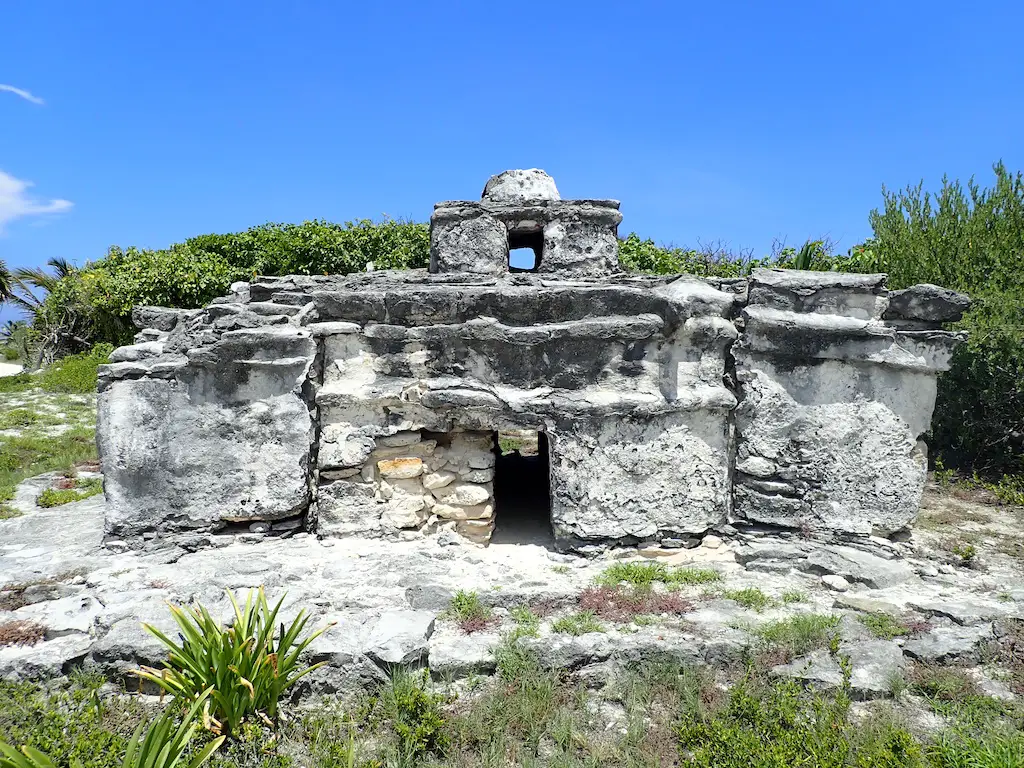
El Caracol is a small individual Mayan ruin, very close to another of the park’s main features – the crocodile lookout point at the eastern edge of the Colombia Lagoon.
Live crocs might win out for your (and your kids’) attention vs. an old ancient structural ruin, but do take the time to appreciate El Caracol.
The fact that these Mayan ‘footprints’ are all around you in Cozumel – even as you take a selfie in front of it with your 5G cell phone! Quite a contrast…
Planning Your Visit (Average Punta Sur visit time: 3 hours)
Park Site Hours:
Please always double-check the official Punta Sur Park website page for current hours.
Punta Sur park is typically open from Monday to Saturday, from 9 am – 5 pm
Admission: Adults $19.00USD, Kids 4-12 yrs $13.00, Children under 3 yrs old get in free
What to Bring: Sun hat, sun shirt, reef-safe sunscreen (like my favorite Stream2Sea line, here. (affiliate link)), bathing suit, towel, water shoes, waterproof camera*, drinking water.
To Make Your Life Easier:
Consider booking a guided tour to Punta Sur Park. You’ll meet up at a convenient spot in downtown San Miguel, and have a comfortable private vehicle and a fun guide with you the whole time. Check out this highly reviewed tour here on Viator.
Punta Sur Cozumel Park Info:
The Punta Sur Eco Park in Cozumel is a large park with multiple highlights beyond El Caracol and the potential for a crocodile sighting. It has one of the best soft sandy beaches in Cozumel, and is also a great spot for a chance to see some rare local wildlife.
This outing is easily suitable for a full day, depending on your travel style.
Punta Sur has plenty of public restrooms, restaurants, a free mangrove boat tour (where you can possibly spot pink flamingoes if your timing is right), the historic Celerian Lighthouse and Museum, a great big white-sand beach for swimming and snorkeling, and more.
Just be sure to get the brochure with map when you enter the park, and then go forth and explore!

Cedral Village History Includes Cozumel Ruins and Relics
Making your way back up north from Punta Sur, another fascinating historical area in Cozumel is the old Cedral Village town.
Marked from the main coastal road with a large, orange ‘entrance’ arch, the village of Cedral is one of Cozumel’s gems that doesn’t always show up in tourism information, but is definitely worth the trip.

Cedral Village is the second-largest settlement area in Cozumel after the much larger San Miguel de Cozumel.
It remains a quiet, somewhat remote residential zone, but is also home to a historic church, a smattering of stores and souvenir shops, places to get food and drink, a large cenote, and so on.
It’s really a quirky and fascinating place.
These days, Cedral Village is best known for its annual Festival of Cedral that takes place each spring, typically in late April or early May.
Cozumel’s Cedral Festival is a huge, multi-day party full of rodeo events, traditional dance performances, great food, and usually lots of beer.
Last but not least, Cedral is also a great stop on your list of the noteworthy Mayan ruins in Cozumel.
The vestiges of Mayan traces in Cedral include a fairly large building structure that may be the oldest ruin on the island, and whose origins are still debated.
Planning Your Visit (Average Cedral Village visit time: 1.5-2 hours)
How to Visit Cedral Village Town in Cozumel:
Cedral Village requires a rental car, or can be part of a guided island tour by a hired taxi (my recommendation).
There are no set hours, but most small businesses located there will keep typical operating hours, but may be open later and closed earlier when tourism season is low.
What to Bring:
Be sure to bring a camera to catch this unique village’s character and charm, as well as spending money for water, snacks, and to support Cedral’s small shops and handmade craft vendors, sun hat, and other sun protection.
To Make Your Life Easier:
Consider booking a guided tour to Cedral Village. You’ll meet up at a convenient spot in downtown San Miguel, and have a comfortable private vehicle and a fun guide with you the whole time. Check out this highly reviewed tour here on Viator.
Cozumel Mayan Ruins and Roads in North End of the Island
One of the best excursions I’ve ever done in Cozumel was a standup paddleboard tour of the northern mangroves with the always cool DeLille watersports (SUP, kitesurfing, etc.).
A totally rare and unique vantage point of Cozumel’s natural riches, this tour also surprised me and my group by offering another way to see some remnants of Cozumel’s Mayan structures, and clearly visible sections of the old Mayan roads.

This particular tour is far off the beaten path, and requires some athleticism and comfort in the water.
If it sounds intriguing to you – do it! It’s one of the coolest things I’ve ever done on the island.
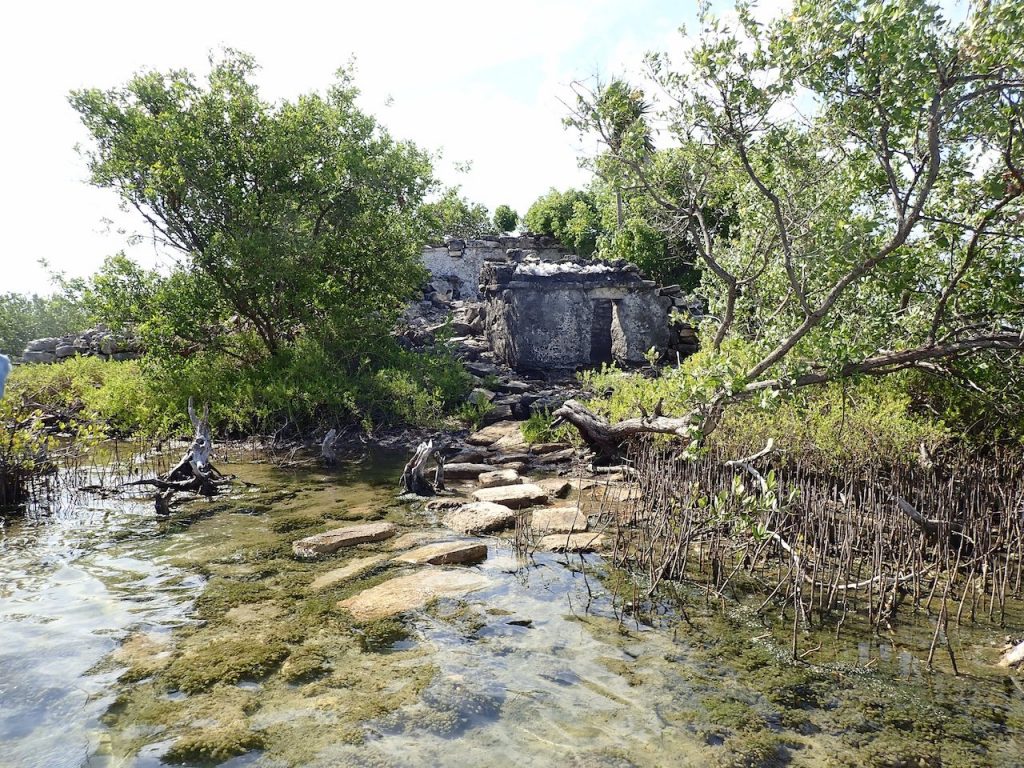
Bonus: you get to see another secret species of marine life in Cozumel, these inverted blue jellyfish that live in a huge colony in the northern lagoon area.

Planning Your Visit (SUP Tour of Cozumel Mangroves approx. 4 hours)
To arrange this specific tour:
You’ll need to book in advance with DeLille Sports directly. There may be limitations on accessing that area due to any weather and wind on your particular day. But if your timing is right, it is SO worth it.
Get in touch with the awesome staff guides at DeLille, and they can set everything up.
When we went (month of August), we met their boat in the marina that is in the North end of the island, and then motored up to the small access point where we walked through a slightly wooded area and launched our paddleboards from there.
What to Bring:
Sun protective clothing, like long-sleeved rash guards and tights, and water/sun hats – think kayaking gear (and see the end of this article for more packing tips).
I’d also highly recommend water shoes – scuba diving booties would be ideal, or maybe even Teva-style sandals in case you need to walk across rocky shores, etc.
Waterproof camera.
Use Reef-Safe Sunscreens in Cozumel:
We always advise people to use only reef-safe sunscreens like these bonafides that we LOVE from Stream2Sea.
Honestly, if doing this particular excursion, I’d really ask you to consider keeping your sun protection strictly to the hats and physical clothing while in the mangroves, themselves, so they can stay as pristine and productive as they possibly can (they’re already stressed out…).
If you have to use some on your face and neck, etc., of course, I understand the caution against skin damage (I’m very prone to sunburn, etc., so I get it). But, if you can hold off until the SUP portion is finished, well…every little bit counts.
In any case, before your trip to Cozumel or any beachy location for that matter, please consider ordering ahead from Stream2Sea – they’ve really worked hard, put the research in, and have developed very high quality and ethically eco-friendly products.
They carry sunscreens, shampoo, leave-in conditioners, hand sanitizers, and even mask de-fog (the best I’ve ever used, reef-safe or not), and all with a strict, science-backed mission of being safe for the marine environment.
Skip the Mainland Mayhem and Enjoy Cozumel Ruins
So there you have it. Cozumel may be a small island, but it’s an important link in the chain of Mayan history in the Yucatan, and Mexico as a whole.
If you’re a real ancient history buff, you may want to take some longer day trips and explore nearby Mayan ruins in the region, such as those in Tulum, Coba, Ek Balam, and of course Chichen Itza.
And if you’re thinking of coming to Cozumel in the month of May, try to coordinate your trip to experience the Sacred Mayan Crossing event (usually the 3rd weekend in May, but dates are confirmed each year). For more, read our post on the Mayan Crossing right here.
For somewhat more bite-sized history lessons that still pack an authentic punch, you don’t even have to take the ferry.
Cozumel ruins sites are still significant, and get you close to the ancient Mayans without a full-on stressful day-trip.
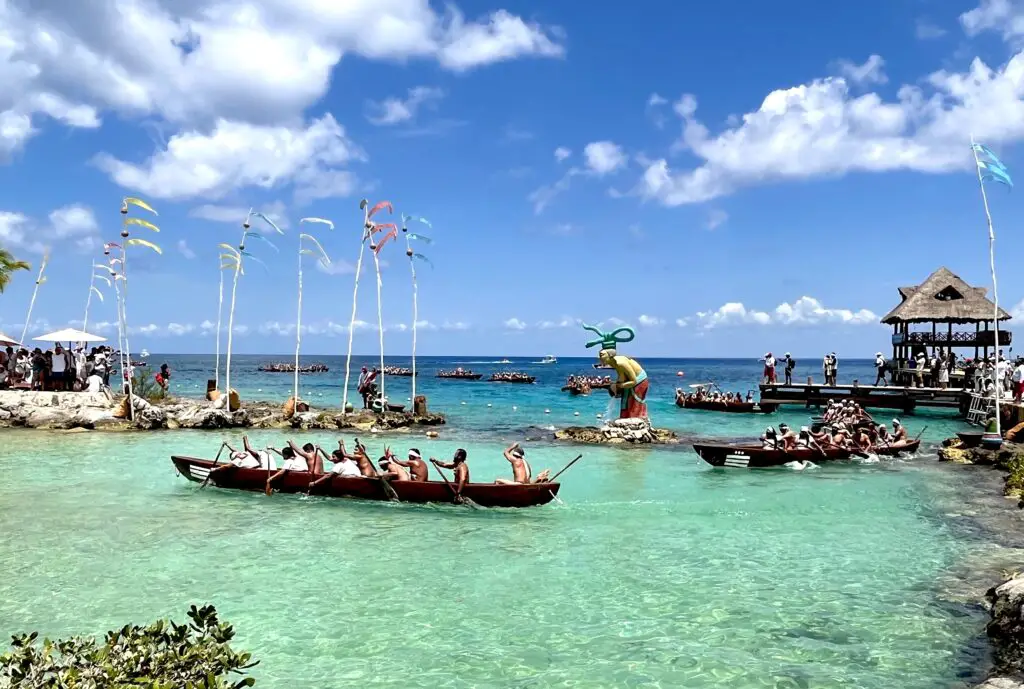
Don’t Neglect the Travel Insurance in Mexico
Cozumel is a really safe vacation destination, but common mishaps sometimes trip people up.
Read all about the most common “hazards” we see in this related post about staying out of harm’s way in Cozumel.
And to truly stay safe, the best thing you can do is invest in travel insurance for this trip, and any other trip you take.
I like Travelex, for ease of use and their high ratings from the Consumer Affairs website. But there are others. The important part is that you cover yourselves in case of any travel disruptions, injuries, or medical emergencies. And protect your trip investment, for pennies on the dollar of your overall costs.
Consumer Affairs' Top-3 Travel Insurance program.
- Free quotes
- Accredited by Better Business Bureau (US)
- Various levels of coverage, per need
- Not for Diving!
- For SCUBA diving coverage, read more about DAN insurance
CozInfo’s Cozumel Packing Essentials:
|
3.5
|
3.5
|
3.5
|
3.5
|
|
$19.99
|
$249.00
|
$59.95
|
$22.99
|

